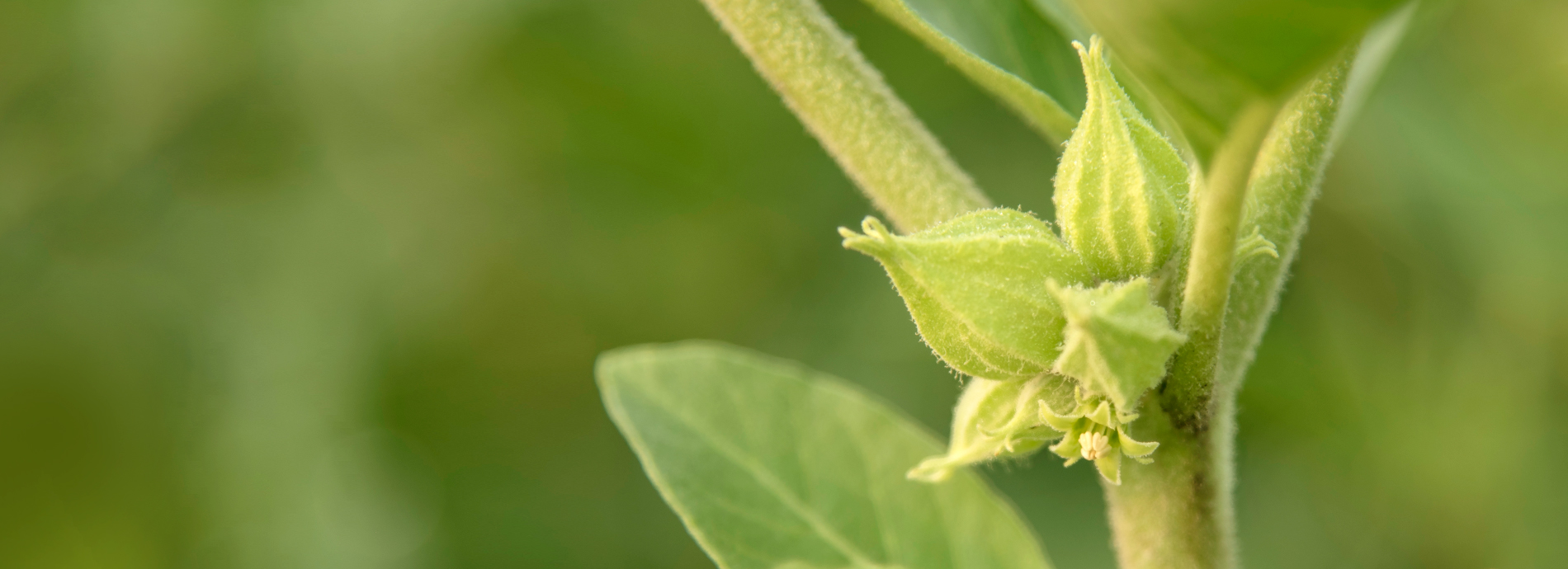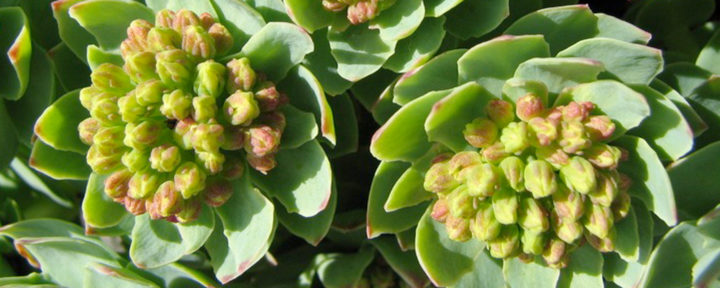Ashwagandha’s botanical name is Withania somnifera, and the species name somnifera likely refers to this herb’s traditional use as a calming herb.* Ashwagandha is in the Solanaceae, or Nightshade family, which includes many popular food plants such as Tomato, Potato and Eggplant, as well as Cayenne and other Peppers. Key features of plants in the Nightshade family are alternate leaves, flower parts in fives with united petals and a two-chambered ovary.
About Ashwagandha
A short, woody plant that is native to India, Africa and the Mediterranean, Ashwagandha is fairly nondescript in appearance. Also known in English as Winter Cherry, it has inconspicuous yellow or greenish flowers that become lantern-like pods containing small orangish-red berries full of yellow seeds.
The root is the part most commonly used in herbalism, and it is harvested in the fall. The seed is a light-dependent germinator and should be sowed indoors in early spring. The plant thrives in full sun in drier climates, and prefers fast-draining, alkaline soil.
The common name, Ashwagandha, is derived from Sanskrit, with “ashwa” meaning horse and “gandha” meaning smell. Some folks do believe the earthy scent of the root resembles the sweat of a horse. We find the aroma to be slightly aromatic and almost musky.
The folklore and history of Ashwagandha
In folklore, Ashwagandha is said to give the strength, stamina and character of a stallion. Traditionally used to support energy and vitality, the nature of this herb is somewhat paradoxical, as it is also very calming and helps to promote a balanced response to stress.*
The use of Ashwagandha has been described in sacred Ayurvedic texts dating back 3,000 to 4,000 years. It was considered a rasayana herb, which means it has been historically used as a rejuvenating tonic.* This herb has been appreciated by many cultures. It is said that Alexander the Great and his army would prepare wine with Ashwagandha, which they used to support energy and vigor.* There is also a legend that Apollo found this herb and gave it to his son Asclepius, a most celebrated hero of health and well-being in ancient Greek mythology.
Herb at a glance
Botanical name: Withania somnifera
Common name(s): Ashwagandha, Winter Cherry
Plant Family: Solanaceae
Native habitat: India, Africa and the Mediterranean
Parts used: root
Botanical description: short woody plant with inconspicuous yellow or greenish flowers that become lantern-like pods containing small orangish-red berries full of yellow seeds.
Use(s): promote a balanced response to stress* and support energy and vitality*
Flavor profile: bitter and slightly musky




